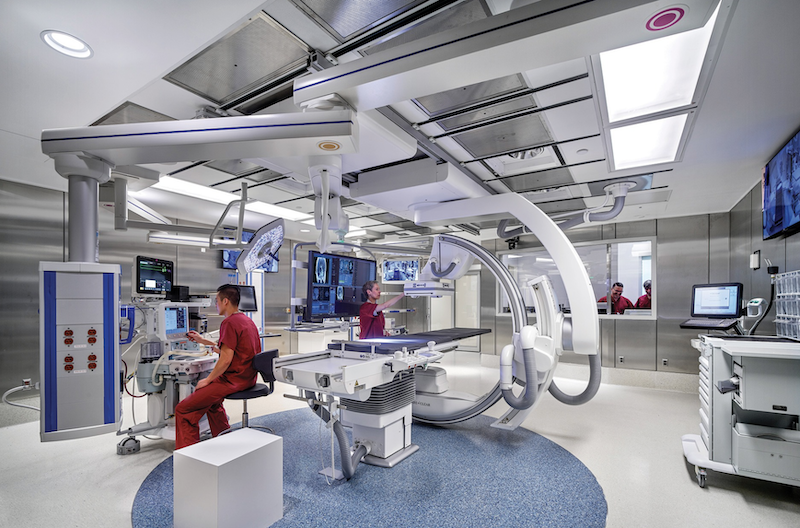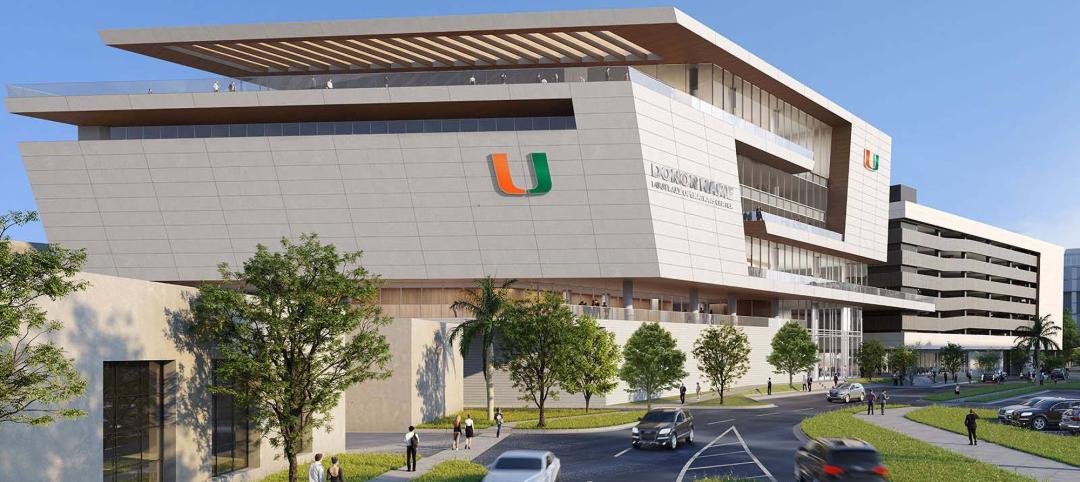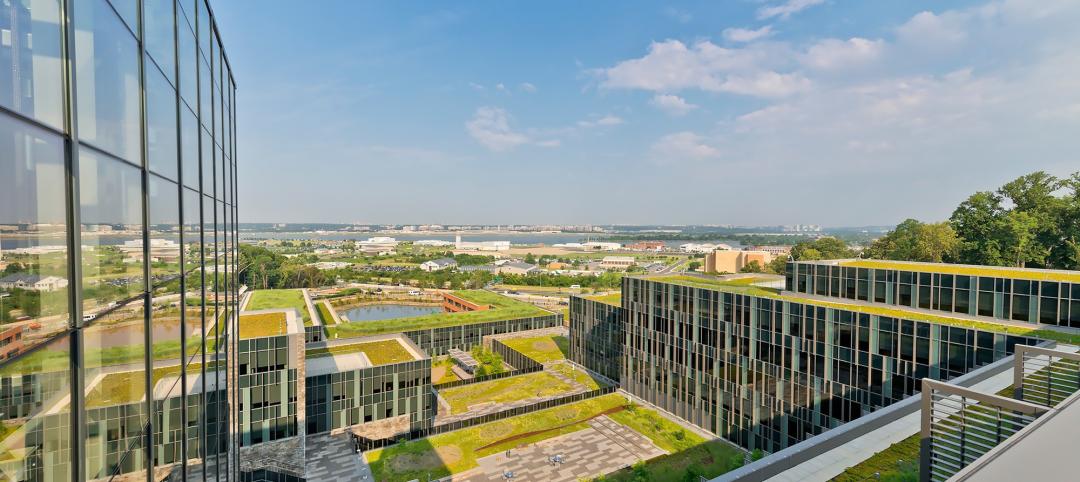New scientific opportunities are creating demand for more and better laboratory space. For academic and teaching institutions, this demand often leads to renovating and expanding existing research labs to accommodate new practices and technology.
For private organizations, demand has many companies exploring ways to convert existing office buildings and underutilized lab spaces into hubs for scientific research. The same is true in the public sector, where governments and health agencies seek opportunities to modernize and expand their research capabilities as quickly and inexpensively as possible.
A renovated lab can cost half as much as a similar brand-new building. Converting an existing building into lab space (adaptive reuse) can also be faster and less expensive than ground-up projects. Renovations and adaptive reuse have the additional benefit of being more environmentally friendly, as these projects generally do not require replacing carbon-heavy concrete and steel structural systems.
Still, lab renovations and conversions are not without their own challenges. Institutions considering a modernization or adaptive reuse of an existing lab facility should weigh the following factors before committing to a project.
1. Understanding the Existing Facility
Lack of quality design or construction documents is a common challenge in renovation and conversion projects. Gathering a good understanding of existing conditions of the facility—its floor-to-floor height, floor loading, structural system design and age, mechanical and system conditions—is a must before embarking on renovation projects.
The age and condition of existing materials may trigger the need for abatement and remediation, which can add to expense and time for the project. Starting with a feasibility study or facility conditions assessment study will help ensure the success of the project.
2. Risk of the Unknown
Laser scanning, testing and historical research can help project teams anticipate most—but not all—the construction challenges that will reveal themselves during a lab renovation or adaptive reuse conversion. Even with a thorough feasibility study, organizations should anticipate surprises once demolition and construction begin. They should build contingencies for solving those challenges into the project scope and budget.
3. Code Compliance
An existing building, particularly one built decades ago, is probably not in line with current life safety, energy and accessibility codes. Updating an existing building to meet these new codes may not always be economically feasible.
Additionally, institutions must consider how a renovation or conversion might trigger code-mandated upgrades in parts of the building that are not part of the lab space. For example, the expansion of a lab may also require additional amenity spaces and restrooms to be upgraded for code compliance.
4. MEP Infrastructure
Lab buildings can require far more mechanical, electrical and plumbing infrastructure than what is found in other building types. Updating an existing facility for new lab space may require cutting holes in the floor to support additional ventilation shaft space and installing new rooftop air handlers.
Project teams should pay particular attention to rooftop load capacity and floor-to-floor ceiling height to ensure a building has the structural integrity and space to support additional ventilation equipment and ductwork. Other MEP considerations for renovated or converted lab space can include backup power (generators) to ensure tests continue during power outages and installing gas lines and additional plumbing to support multiple research needs.
5. Specialized Spaces
Beyond MEP considerations, a lab renovation or adaptive reuse may need other infrastructure improvements. Organizations may begin by analyzing floor movement within the existing building, as lab equipment often requires strict vibration control.
Labs may also require positive or negative air flow that can be difficult to achieve if an existing facility is not tightly sealed. Column-to-column dimension is another factor to consider, particularly when it comes to the arrangement of lab modules that are typically 10.5 to 11 feet long. More complex labs may also require clean construction protocols that add costs and environmental monitoring systems to ensure operational safety.
More from Author
HOK | Apr 2, 2024
How university rec centers are evolving to support wellbeing
In a LinkedIn Live, Recreation & Wellbeing’s Sadat Khan and Abby Diehl joined HOK architect Emily Ostertag to discuss the growing trend to design and program rec centers to support mental wellbeing and holistic health.
HOK | Jan 25, 2024
40 Under 40 Class of 2023 winner Kimberly Dowdell inaugurated as AIA 2024 President
The American Institute of Architects (AIA) has announced the inauguration of Kimberly Dowdell, AIA, NOMAC, NCARB, LEED AP BD+C, Principal and Director of Strategic Relationships at HOK and BD+C 40 Under 40 superstar, as its 100th president.
HOK | Jul 13, 2023
Deep green retrofits: Updating old buildings to new sustainability standards
HOK’s David Weatherhead and Atenor’s Eoin Conroy discuss the challenges and opportunities of refurbishing old buildings to meet modern-day sustainability standards.
HOK | Jun 5, 2023
Office design in the era of Gen Z, AI, and the metaverse
HOK workplace and interior design experts Kay Sargent and Tom Polucci share how the hybrid office is evolving in the era of artificial intelligence, Gen Z, and the metaverse.
HOK | May 5, 2023
9 workplace design trends for 2023
HOK Director of WorkPlace Kay Sargent and Director of Interiors Tom Polucci discuss the trends shaping office design in 2023.
HOK | Apr 4, 2023
6 examples of modern college training facilities
HOK discusses the future of college training facilities, with six design takeaways derived from a discussion between Dan Radakovich, Director of Athletics at the University of Miami, and Trevor Bechtold, Director, HOK’s Sports + Recreation + Entertainment practice.
HOK | Feb 23, 2023
Using data to design the sports venue of the future
Former video game developer Abe Stein and HOK's Bill Johnson discuss how to use data to design stadiums and arenas that keep fans engaged and eager to return.
HOK | Jan 23, 2023
How regenerative design is driving AEC industry innovation
HOK's Sean Quinn and Microsoft's JoAnn Garbin discuss the next step of sustainability: regenerative design.
HOK | Nov 23, 2022
7 ways the Inflation Reduction Act will impact the building sector
HOK’s Anica Landreneau and Stephanie Miller and Smart Surfaces Coalition’s Greg Kats reveal multiple ways the IRA will benefit the built environment.
HOK | Jul 19, 2022
All is not lost: 3 ways architects can respond to the Supreme Court’s EPA ruling
The U.S. Supreme Court’s ruling to limit the Environmental Protection Agency’s power to regulate greenhouse gas (GHG) emissions from power plants dealt a significant blow to our ability to fight the climate crisis with federal policy.
















